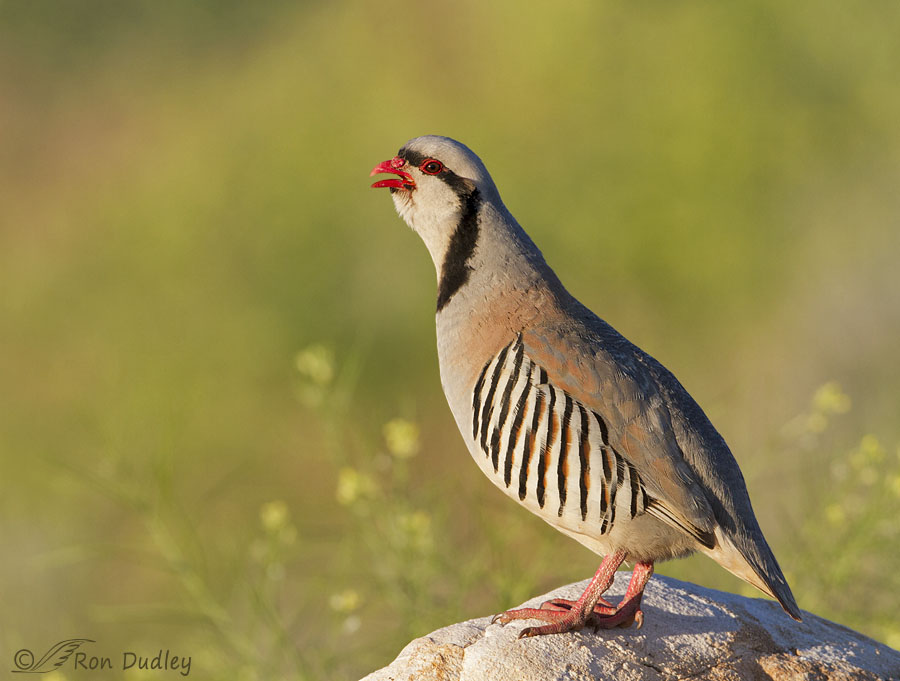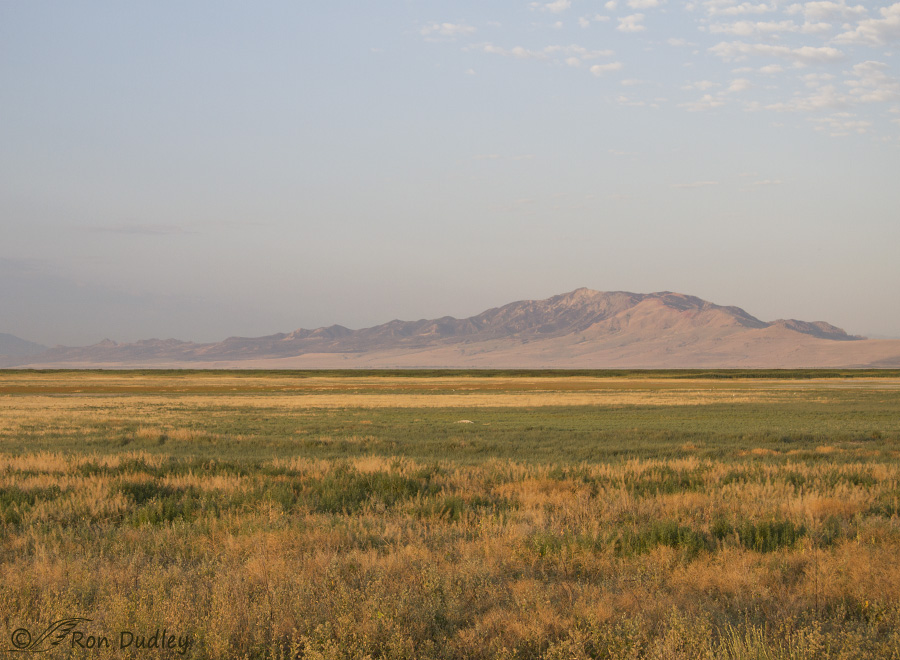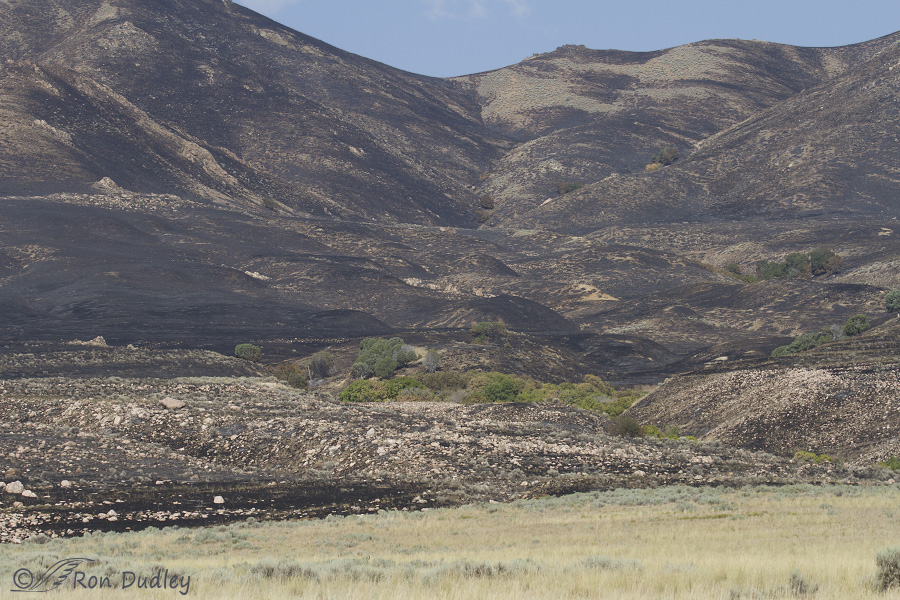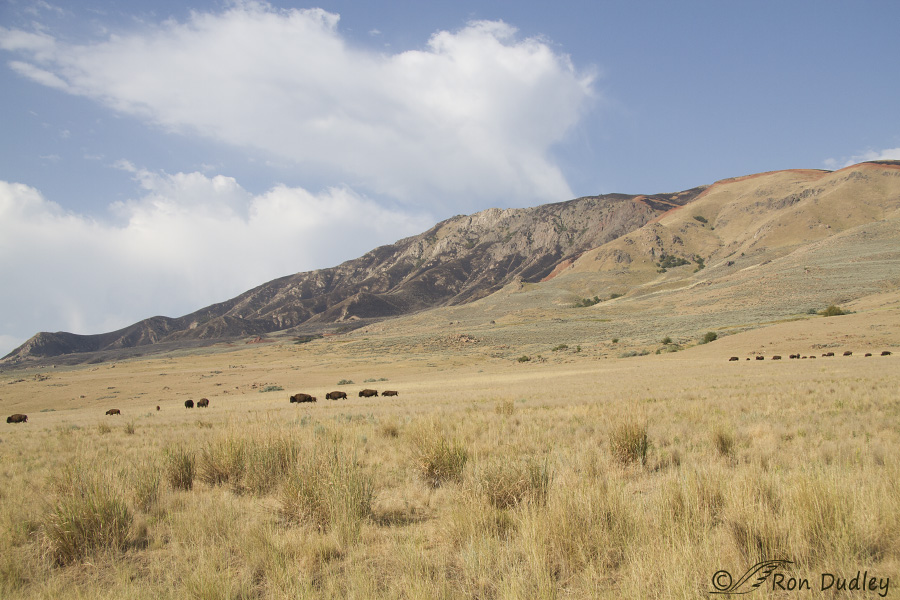For several years I’ve wanted to know what caused the Chukar population on Antelope Island to crash. Recently State Park Assistant Manager Wendy Wilson provided some answers.

For the first eight years of my bird photography career Chukars were ubiquitous on Antelope Island. In the early morning I could hear their distinct calls echoing off the hillsides and seeming to come from every direction and they could be seen feeding or scurrying around in the vegetation almost anywhere. Especially in the spring and early summer they could easily be found calling from elevated perches like boulders and even picnic tables.
And unlike most Chukars elsewhere that are extremely wild and difficult to approach the birds on the island were somewhat acclimated to vehicles so typically they could be approached and viewed with relative ease.They were a delightful, if introduced, addition to the island’s wildlife.
But all that changed about four years ago in what seemed like the blink of an eye. Suddenly they just weren’t there. I could often go many months without seeing or even hearing them a single time. In at least one year I don’t believe I photographed a single Chukar and I was far from the only person who noticed their precipitous decline. I’m unaware of any local bird or wildlife photographers who didn’t notice the same thing.
For four years now I’ve wanted to know why they essentially vanished. I had my suspicions but I knew nothing concrete until about a week ago when I had a short but very pleasant visit with Antelope Island State Park Assistant Manager Wendy Wilson. When I asked her what happened to the Chukars she said they believe they know the reason for their decline.
Wendy said the most likely culprit was fire.

In July of 2016 a particularly nasty lightning-caused and wind-driven wildfire consumed almost exactly half of the island’s 28,000 acres. I was among the first to drive the East Road early on the morning they reopened it after the fire. For this photo I was on the causeway at dawn and approaching the island from the east so we can easily see the extent of the fire scar covering about half of the island.
When this photo was taken fire crews from several western states were still mopping up hotspots.
Thankfully large mammals like these bison were able to escape the fire by moving north and east in front of the flames but it was close. On the morning these photos were taken Park Manager Jeremy Shaw told me that at times the wind-driven 6-8′ flames were moving north at about 25 mph.

Mostly the fire burned the steeper rocky terrains of the island and avoided the flatter grasslands closer to the lake shore but that was particularly bad news for Chukars. The preferred habitat of Chukars in the American West is steep rocky mountainous terrain harboring a mixture of brush, grasses and forbs and that’s exactly the habitat where the fire was concentrated.
When this type of habitat is destroyed, Chukars pay the price.
But there’s some good news, finally. After four years of a Chukar drought on the island I’m finally seeing and hearing them once again and in reasonably good numbers too. Wendy told me that others are reporting the same thing. They’re still far from fully recovered but the trend is a positive one.
I have to wonder if the island’s coyotes didn’t suffer the same consequences from the fire because their numbers have been noticeably down for several years also. I wish I’d asked that question of Wendy but I just didn’t think of it.
Time will tell I guess but I’m very pleased to finally get a handle on the likely cause of the Chukar decline and I thought some of my readers, especially locals, might be interested too.
Ron



It is good news that the Chukars are coming back.
Oh Ron.
This strikes home. Hard.
We are yet to determine the impact of this summer’s catastrophic fires. Human communities are still in recovery mode but we have no idea just how many other species have been driven further down the path to extinction (birds, mammals, reptiles, insects, plants…)
I am so pleased that the chukars at least are showing signs of recovery.
“This strikes home. Hard.”
I figured it might, EC.
For the first year or two I wondered if the fire might be cause of the Chukar’s decline but when it lasted so long I dismissed that idea because I figured it wouldn’t take them that long to recover.
Apparently I was wrong.
When you team habitat loss, food loss, and severe reduction in specific population levels recovery (if it happens) needs a LOT of time.
The Chukar resurgence reminds me of the reports of recent wildlife sightings in uncommon areas due to lack of human activity caused by the pandemic.
I’m so glad the population is bouncing back.
That’s a very beautiful photograph! Thanks for the informative post.
Thank you, Joanne.
It will be nice to have the chukars back. This year is looking hot, dry and windy. Lets hope for few fires!
I hate those summer fires all over the west!
Good to hear the chukars are returning! They’re such strikingly beautiful birds.As the mountain and their habitat recovers (along with their food sources), so will their numbers. It often amazes me how quickly an area can recover from even catastrophic fires. This planet has significant regenerative powers if only left to its own devices. I believe it will even recover from our presence when we’re gone
As for the coyotes, my guess would be that because of the reduction in their prey populations, their populations crashed as a result. Now, that said, as their prey populations rise, so will their numbers.
Laura, at this point I’m even more concerned about coyotes than Chukars. On the island their primary prey is voles but voles crashed a year or two before the fire so that may have been the cause of the coyote decline.
Sad about the 1-2 punch for the coyotes BUT they are amazingly able to recover from many things……..
Very interesting. Thanks for the explanation about the Chukars. I’ve looked for Chukars on Antelope Island after seeing pictures of them from you and others. However, I just started going to Antelope Island in 2017, after we moved to Utah. Now that I know the back-story, I’ll be watching more closely for them. I hope they make a full come-back.
Hope you see some soon, Steve. Typically they’re easiest to find on the north end of the island.
I’m glad they are back.
Or at least coming back…
Glad they’re coming back. Even when the cause of a wildfire is “natural,” I still always wonder what role human-exacerbated climate change is playing. Not looking forward to this summer/fall here in California.
Marty, yesterday I was actually thinking of what it might be like this summer in your part of CA while I was looking at maps of growing zones. It could be bad here but it could be simply awful down there. Sure hope not.
Glad the Chukars are making a come back on the island. The fire makes sense with possible inability to escape and loss of habitat. It IS ironic that the bighorn sheep survived that only to be taken out by disease later…. Rain/snow mix this morning…………….
Rain/snow mix this morning……………. 
I strongly suspect it was loss of habitat more than anything, Judy.
My daughter recently moved from Bountiful and she recalls seeing quite a few chukars up in the foothills. Maybe when the chukars saw the fire coming, they just flew to the nearest mountain like area. I actually have a picture of two chukars in a neighborhood in Bountiful. Anyway, probably far fetched but nice to think that they used their smarts and didn’t just die in those flames or in a burned out habitat.
An interesting if unlikely possibility, Brad. I suspect the Chukars your daughter saw in the foothills behind Bountiful were birds that were already there. But who knows…
I grew up in Centerville, which is just the town north of Bountiful, we often saw chuckers in the foothills. My friend’s dad and brothers would hunt them in the fall.
Thanks for this post, as difficult as it was, at least lightening was the cause and not man. Glad they are coming back and fortunately the big mammals were spared.
It’s ironic, Dick. Immediately after the fire park personnel were worried about the fate of the island’s bighorn sheep but they’re always on the backside of the island in inaccessible areas where they couldn’t be easily checked on.
It turns out they survived the fire but a couple of years later they were wiped out by disease.
If it isn’t one thing it is another!
A really interesting post Ron. Wildfires have caused so much damage especially here in the west whether caused by lightening or by human carelessness. That one photo of the burned out area says it all. Of course here in Prescott we are very familiar with wildfires and will never forget our 19 Hotshots who perished in the nearby Yarnell fire. Sure hope that your Chukars and all other wildlife are soon able to return to that habitat.
I remember those Hotshots who were killed too, Everett. Such a tragic loss!